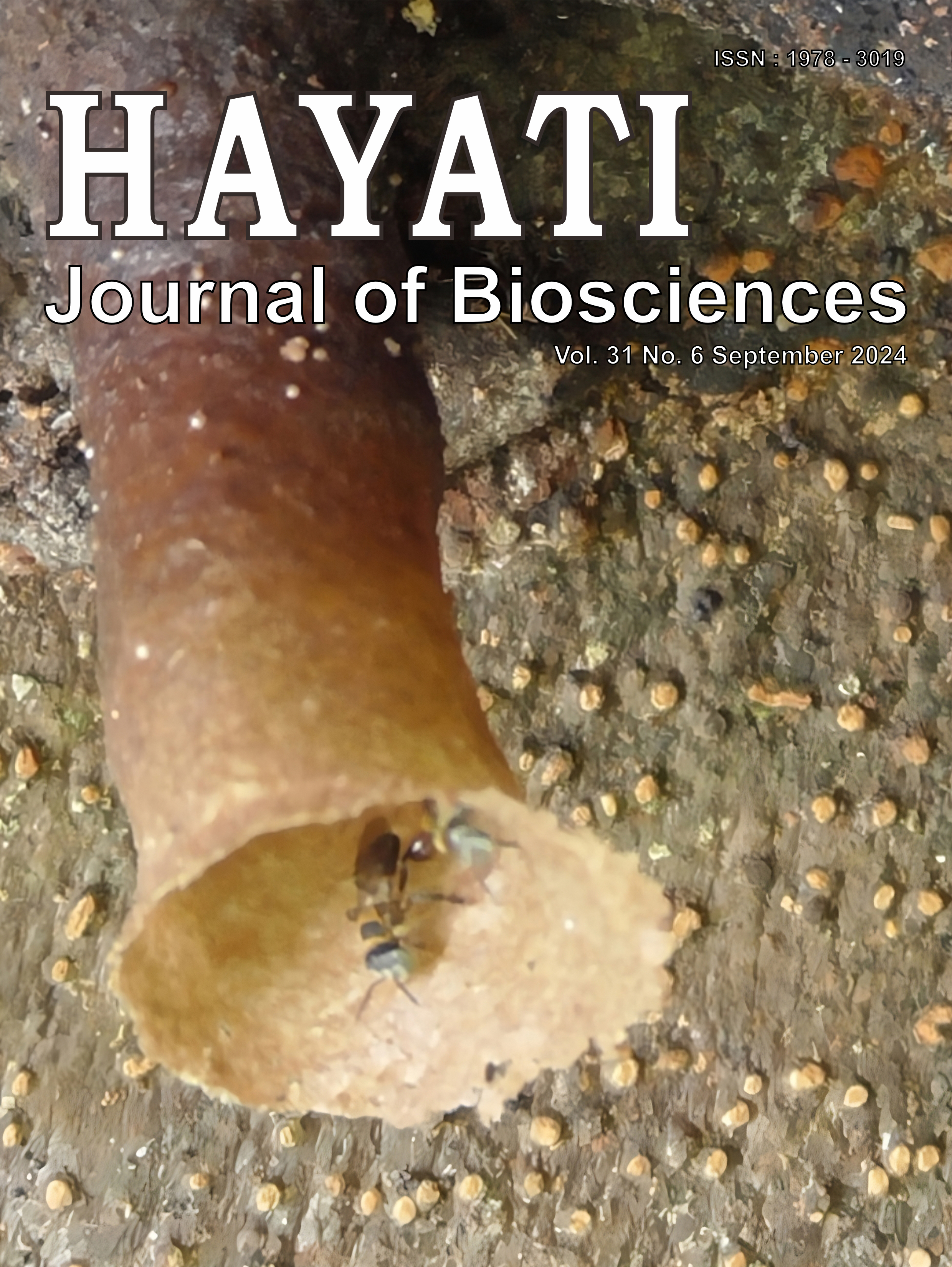Species Richness and Nesting Sites of Stingless Bees in the Forest and Settlement Areas in Banten Province, Indonesia and their Morphometry
Abstract
Stingless bees (Apidae: Meliponinae) are distributed in the tropics, and there are more than 600 species worldwide, Forty-six species were recorded in Indonesia. Nest of the species is generally found in tree holes, rocks, house walls, house wooden, bamboo cavities, and soil. Current research explores the species richness, nesting sites and morphometry of stingless bee species in the forest and settlement areas in Banten province, Indonesia. Road- and purposive sampling methods were used to explore the stingless bee species. Thirty-five body characters of each stingless bee species were measured. Results showed four stingless bee species found were Tetragonula laeviceps, Heterotrigona itama, Lepidotrogona terminata, and Tetragonula sp. The dominant species found was L. terminata in the forest, while T. laeviceps in the settlement areas. The nesting sites of stingless bees in the forests were found in the tree cavities of various plant species with tree diameter range 39.3-87.3 cm. In contrast, the nest of T. laeviceps was found in the tree of Swietenia mahagoni, Lansium parasiticum, and bamboo cavities of houses in the settlement areas. The nest entrances of stingless bees varied, i.e., oval-rounded, tubular with varied diameters, and blackish-brown in color. The internal structure of the nest consists of brood cells, pollen cells, and honey cells. Heterotrigona itama has the largest body size (5.52 mm in length), followed by L. terminata (4.99 mm in length) and T. laeviceps (3.86 mm in length). Thirty-three characters of H. itama were larger than L. terminata and T. laeviceps, except for gena width and malar length.
Downloads
Copyright (c) 2024 Tri Atmowidi, Widia Bela Oktaviani, Khadijah Nurul Karimah, Taruni Sri Prawasti, Dorly, Windra Priawandiputra

This work is licensed under a Creative Commons Attribution-NonCommercial 4.0 International License.
HAYATI J Biosci is an open access journal and the article's license is CC-BY-NC. This license lets others distribute, remix, tweak, and build upon author's work, as long as they credit the original creation. Authors retain copyright and grant the journal/publisher non exclusive publishing rights with the work simultaneously licensed under a https://creativecommons.org/

























.png) IPB University
IPB University Department of Biology
Department of Biology The Indonesian Biological Society
The Indonesian Biological Society 

